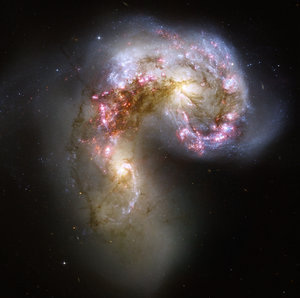Accept all cookies Accept only essential cookies See our Cookie Notice

About ESA
The European Space Agency (ESA) is Europe’s gateway to space. Its mission is to shape the development of Europe’s space capability and ensure that investment in space continues to deliver benefits to the citizens of Europe and the world.
Highlights
ESA - United space in Europe
This is ESA ESA facts Member States & Cooperating States Funding Director General Top management For Member State Delegations European vision European Space Policy ESA & EU Space Councils Responsibility & Sustainability Annual Report Calendar of meetings Corporate newsEstablishments & sites
ESA Headquarters ESA ESTEC ESA ESOC ESA ESRIN ESA EAC ESA ESAC Europe's Spaceport ESA ESEC ESA ECSAT Brussels Office Washington OfficeWorking with ESA
Business with ESA ESA Commercialisation Gateway Law at ESA Careers Cyber resilience at ESA IT at ESA Newsroom Partnerships Merchandising Licence Education Open Space Innovation Platform Integrity and Reporting Administrative Tribunal Health and SafetyMore about ESA
History ESA Historical Archives Exhibitions Publications Art & Culture ESA Merchandise Kids Diversity ESA Brand Centre ESA ChampionsLatest
Space in Member States
Find out more about space activities in our 23 Member States, and understand how ESA works together with their national agencies, institutions and organisations.
Science & Exploration
Exploring our Solar System and unlocking the secrets of the Universe
Go to topicAstronauts
Missions
Juice Euclid Webb Solar Orbiter BepiColombo Gaia ExoMars Cheops Exoplanet missions More missionsActivities
International Space Station Orion service module Gateway Concordia Caves & Pangaea BenefitsLatest
Space Safety
Protecting life and infrastructure on Earth and in orbit
Go to topicAsteroids
Asteroids and Planetary Defence Asteroid danger explained Flyeye telescope: asteroid detection Hera mission: asteroid deflection Near-Earth Object Coordination CentreSpace junk
About space debris Space debris by the numbers Space Environment Report In space refuelling, refurbishing and removingSafety from space
Clean Space ecodesign Zero Debris Technologies Space for Earth Supporting Sustainable DevelopmentLatest
Applications
Using space to benefit citizens and meet future challenges on Earth
Go to topicObserving the Earth
Observing the Earth Future EO Copernicus Meteorology Space for our climate Satellite missionsCommercialisation
ESA Commercialisation Gateway Open Space Innovation Platform Business Incubation ESA Space SolutionsLatest
Enabling & Support
Making space accessible and developing the technologies for the future
Go to topicBuilding missions
Space Engineering and Technology Test centre Laboratories Concurrent Design Facility Preparing for the future Shaping the Future Discovery and Preparation Advanced Concepts TeamSpace transportation
Space Transportation Ariane Vega Space Rider Future space transportation Boost! Europe's Spaceport Launches from Europe's Spaceport from 2012Latest

Hyperactive galaxy NGC 7673
Thank you for liking
You have already liked this page, you can only like it once!
The disturbed spiral galaxy NGC 7673 is ablaze with the light from millions of new stars. Each of its infant giant blue star clusters shines 100 times as brightly in the ultraviolet as similar immense star clusters in our own Galaxy. Scientists studying this object have two pressing questions: "What has triggered this enormous burst of star formation and how will this galaxy evolve in the future?"
Telltale patches of blue light are signs of the formation of millions of new stars in the tangled spiral galaxy NGC 7673. Each of the bluish areas in this image consists of immense star clusters containing thousands of young stars. These clusters lie on the spiral arms of NGC 7673 and so emphasise its somewhat ragged look. This image, taken from Earth orbit by the ESA/NASA Hubble Space Telescope in 1996 and 1997, also shows two other galaxies seen in the background of the image, to the left and right of NGC 7673. These galaxies are further away and so appear redder, due to their higher redshift, an effect caused by the expansion of the Universe.
The youngest blue stars in NGC 7673 are blazing with intense ultraviolet radiation. Each star cluster radiates 100 times more ultraviolet light than the famous Tarantula Nebula (30 Doradus), the largest star-forming region known in the local group of galaxies.
-
CREDIT
European Space Agency & Nicole Homeier (European Southern Observatory and University of Wisconsin-Madison) -
LICENCE
ESA Standard Licence

Hyperactive galaxy NGC 7673

Dwarf galaxy Kiso 5639

Galaxy cluster with bursting heart

Hubble's newest camera eyes hotbed of star formation















 Germany
Germany
 Austria
Austria
 Belgium
Belgium
 Denmark
Denmark
 Spain
Spain
 Estonia
Estonia
 Finland
Finland
 France
France
 Greece
Greece
 Hungary
Hungary
 Ireland
Ireland
 Italy
Italy
 Luxembourg
Luxembourg
 Norway
Norway
 The Netherlands
The Netherlands
 Poland
Poland
 Portugal
Portugal
 Czechia
Czechia
 Romania
Romania
 United Kingdom
United Kingdom
 Slovenia
Slovenia
 Sweden
Sweden
 Switzerland
Switzerland
























